Top 10 Best European Sports Cars of the '80s

The 1980s were a wondrous time.
Forget the questionable fashion, massive hairstyles and crippling interest rates, the 1980s were a revolution for automotive performance. It was a paradigm shift in thinking. This was the decade where turbochargers, all-wheel drive and on-board computers really started to be exploited for optimal performance.
At the forefront of this assault were the Europeans. Everything was up for grabs. Where the engine was placed, which wheels were driven and how many cylinders were required. Every manufacturer had a different idea of ultimate performance at the time and it lead to some truly spectacular cars.
Shrinking a list down from dozens of great 1980s European sports cars was hard, but here are our top 10 best European sports cars.
10. Lotus Esprit Turbo
First introduced in 1976, the Lotus Esprit enjoyed nearly 30 years of existence. But it was the 1980s where the Esprit really shined. In 1980, the Esprit gained a new, more powerful model called the Turbo. It came equipped with a 2.2-liter turbocharged four-cylinder engine that made an impressive 210 HP and 200 lb-ft of torque.
By 1987, the Esprit had received a redesign and the turbo engine now made 215 HP and 220 lb-ft. of torque. This allowed the lightweight, mid-engine Lotus to sprint from 0 to 60 MPH in the low five second range. Although there would be faster, more powerful Esprits in the 1990s, it was the wedge-shaped ’80s model that really captured the hearts of fans around the world.
9. Lancia Delta S4
The original Lancia Delta was a compact hatchback available with all-wheel drive that loved to go rally racing. The peak of its motorsports career happened in 1985 and 1986 as a Group B monster. To qualify for Group B racing, 200 homologation Deltas had to be made with the same mechanics as the rally monster.
This meant the front engine of the Delta was ripped out and a 1.8-liter supercharged and turbocharged four-cylinder engine was installed where the back seats used to be. That made the Delta a mid-engine all-wheel drive two-seater. Called the Delta S4 and often referred to as the “Stardale”, the car made an official 247 HP and 215 lb-ft of torque. This was a far cry from the 500+ HP the rally car was rumored to make, but it was still a substantial amount of power for a car in the mid-80s weighing under 2,700 lbs.
8. Audi Quattro Coupe
Before the Delta S4 came on the scene, the Audi Quattro was the original street-legal rally car. Featuring a 2.1-liter five-cylinder engine and all-wheel drive, the original 1980 Quattro made 197 HP and 210 lb-ft. of torque. At the time it was rare for a sports coupe to feature all-wheel drive and the Quattro showed how it could be exploited for maximum traction.
By the end of the decade power had slightly increased in the Quattro. And like the Delta S4, there was a limited edition Quattro model sold in the middle of the decade to meet Group B rallying homologation regulations. Called the Sport Quattro, this Audi featured a shortened wheelbase and an engine that pumped out over 300 HP.
7. Mercedes-Benz 190E 2.3-16/2.5-16
As popular as rallying racing was in the 1980s, so was the German Touring Car series called DTM. Like Group B rallying, DTM required production based vehicles for its racing series. This meant that if a manufacturer wanted to go faster on the race track, the company had to make the road car faster as well.
SEE ALSO: Top 10 Sexiest CarsThis lead to the creation of the Mercedes-Benz 190E 2.3-16 that later gave way to the 190E 2.5-16. 190E refers to the model name, a compact sedan sold by Mercedes at the time. The 2.3-16 refers to the engine, a 2.3-liter four-cylinder, 16-valve engine developed in conjunction with Cosworth.
Developing 185 HP and 174 lb-ft. or torque, it was a big step up from the basic 190E’s powerplant. This engine would be replaced by a larger 2.5-liter until that pushed power up over 200 HP in some configurations.
But the 190E more than just an engine; it received a wholesale overhaul in the performance department. Better aerodynamics, upgraded suspension, more powerful brakes and a beefier drivetrain really transformed this Mercedes-Benz sedan in a serious performer.
6. Ford RS200
While Audi, Lancia and many other manufacturers made one-off versions of existing production car models for Group B rally racing, Ford decided to make an entirely new car. Called the RS200, it was a small, all-wheel drive, mid-engine coupe powered by a 1.8-liter turbocharged engine. Although the RS200 was down on power compared to its Group B competitors and never garnered any real success, it did lead to a great, if not limited road car.
Using the same 1.8-liter engine, the RS200 made 250 HP in street trim which was great for a car of its diminutive size. Like all Group B cars, only 200 homologation cars had to be built and any vehicles still alive today command top dollar.
5. BMW M3 (E30)
Like the Mercedes-Benz 190E, the original BMW M3 was created for homologation purposes in the DTM racing series. Using a 2.3-liter four-cylinder engine, the street-legal M3 could make over 210 HP, while racing cars made much more.
Of course, the M3 was more than just an engine upgrade. Starting life as an E30 3-series coupe, the M3 received upgraded aerodynamics, suspension components, drivetrain parts and brakes. Unlike the 190E, the first generation M3 was just the beginning of a legacy that still lives on today. Despite several generations in existence, many still consider this first ever M3 as the best ever M3.
4. Ferrari Testarossa
The Ferrari Testarossa was one of the most poster-plastered cars of the 1980s. With sexy Pininfarina styling and an incredible twelve-cylinder note, the Testarossa was a dream car of boys and girls around the world.
Powered by a 4.9-liter flat-V12 making 390 HP, the Testarossa wasn’t just a pretty face, it was fast too. It was a low-slung, wide car that could handle a corner just as well as a straightaway. Although it would receive more power and a new name in the 1990s, it will forever been known as the Testarossa to fans.
3. Lamborghini Countach
If the Ferrari Testarossa was one of the most poster-friendly cars in the 1980s, the Lamborghini Countach was the most poster-friendly car of the 1980s. Despite being around since the mid-1970s, it was in 1985 that the Countach really came into its own.
Referred to as the 5000QV, the Countach received a new 5.2-liter V12 engine that created a massive 455 HP. This made the Countach blisteringly fast and capable of incredibly high top speeds for the time.
Even if the car wasn’t all that nice to drive and sight-lines were downright scary, it doesn’t matter. Even today the cars still looks drop-dead gorgeous and command attention everywhere they go.
2. Ferrari F40
Despite the Testarossa being the most well-known Ferrari of the 1980s, it wasn’t the fastest. That honor went to the F40.
Basically a race car for the streets, the F40 incorporated all the brand from Maranello knew about performance at the time. Everything about the car was insane; aerodynamics, suspension geometry, materials and, of course, the price.
Situated behind the driver was a 2.9-liter turbocharged V8 engine that unleashed 471 HP. With serious levels of weight savings employed, including the omission of door handles, door panels or a glove box, the F40 had few rivals that could meet its unbelievable levels of performance in the 1980s.
1. Porsche 959
But one car that could keep pace with the F40 was the Porsche 959. Like a lot of other cars on this list, the 959 was created as a homologation for Group B rally racing. But unlike a lot of other cars, Porsche didn’t detune the road going version of the car.
Making 444 HP from a turbocharged 2.85-liter six-cylinder engine, the 959 was down on power compared to the F40 and weighed considerably more. With the use of sequential turbochargers though, the Porsche had a broader, more usable torque curve than the Ferrari.
SEE ALSO: Top 10 Japanese Sports Cars of the 90sBut what gives the 959 the number one spot on this list is its all-wheel drive system. Supercars in the 1980s were reaching the adhesion limits of how much power the rear wheels could put to the ground. With an advanced all-wheel drive system, Porsche proved that powering all four-wheels in a track-orientated sports car produced bigger gains in performance than the penalties an all-wheel drive system’s weight increase produced. It really set the formula for many future supercars to follow.
Recent Updates:
November 25, 2021 – Updated overall format of links and images. Updated introduction to accuracy. Updated Lotus Esprit Turbo text for accuracy. Updated Ford RS200 text for accuracy. Updated Ferrari Testarossa text for accuracy. Updated Lamborghini Countach text for accuracy. Updated Porsche 959 text for accuracy.
Become an AutoGuide insider. Get the latest from the automotive world first by subscribing to our newsletter here.

A 20+ year industry veteran, Mike rejoins the AutoGuide team as the Managing Editor. He started his career at a young age working at dealerships, car rentals, and used car advertisers. He then found his true passion, automotive writing. After contributing to multiple websites for several years, he spent the next six years working at the head office of an automotive OEM, before returning back to the field he loves. He is a member of the Automobile Journalists Association of Canada (AJAC), and Midwest Automotive Media Association (MAMA). He's the recipient of a feature writing of the year award and multiple video of the year awards.
More by Mike Schlee



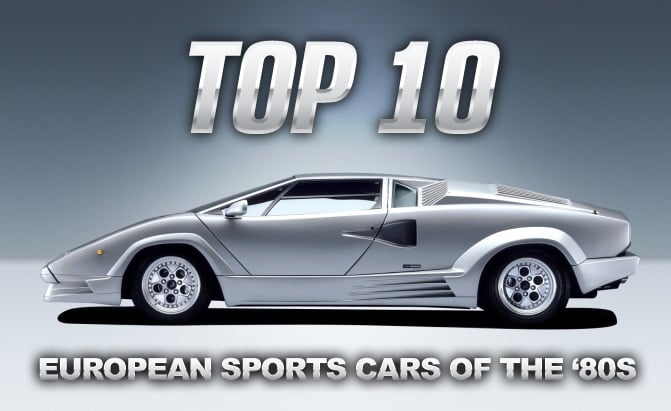























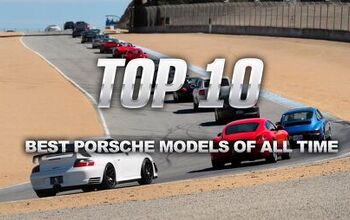
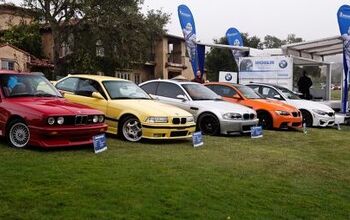

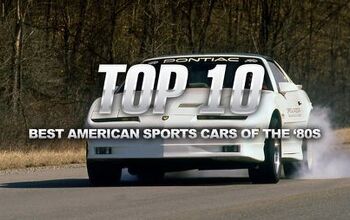
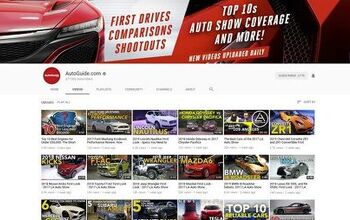
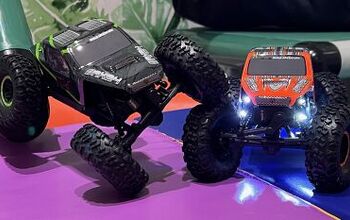


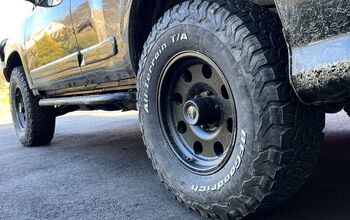
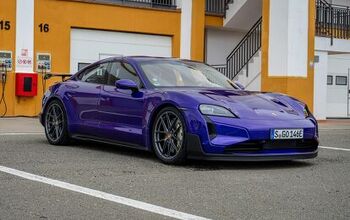


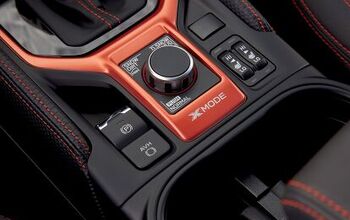

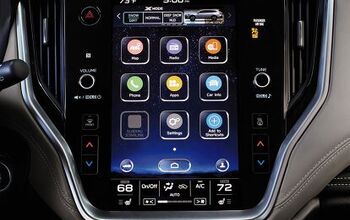
Comments
Join the conversation
auto.....
-E30 M3 is all about power corrupts. -Mike is absolutely right to call the Testarossa engine a V12 because even though it is a 180 degree 12-banger; it is not a true flat-12 unless it has opposed crank throws (boxer engine) -i don't know how Walter Rhrl ever agreed to sell his original Porsche 959 prototype, but i'm still happy i got to see it at Winter Park Concours d'Elegance. Here's a pic: